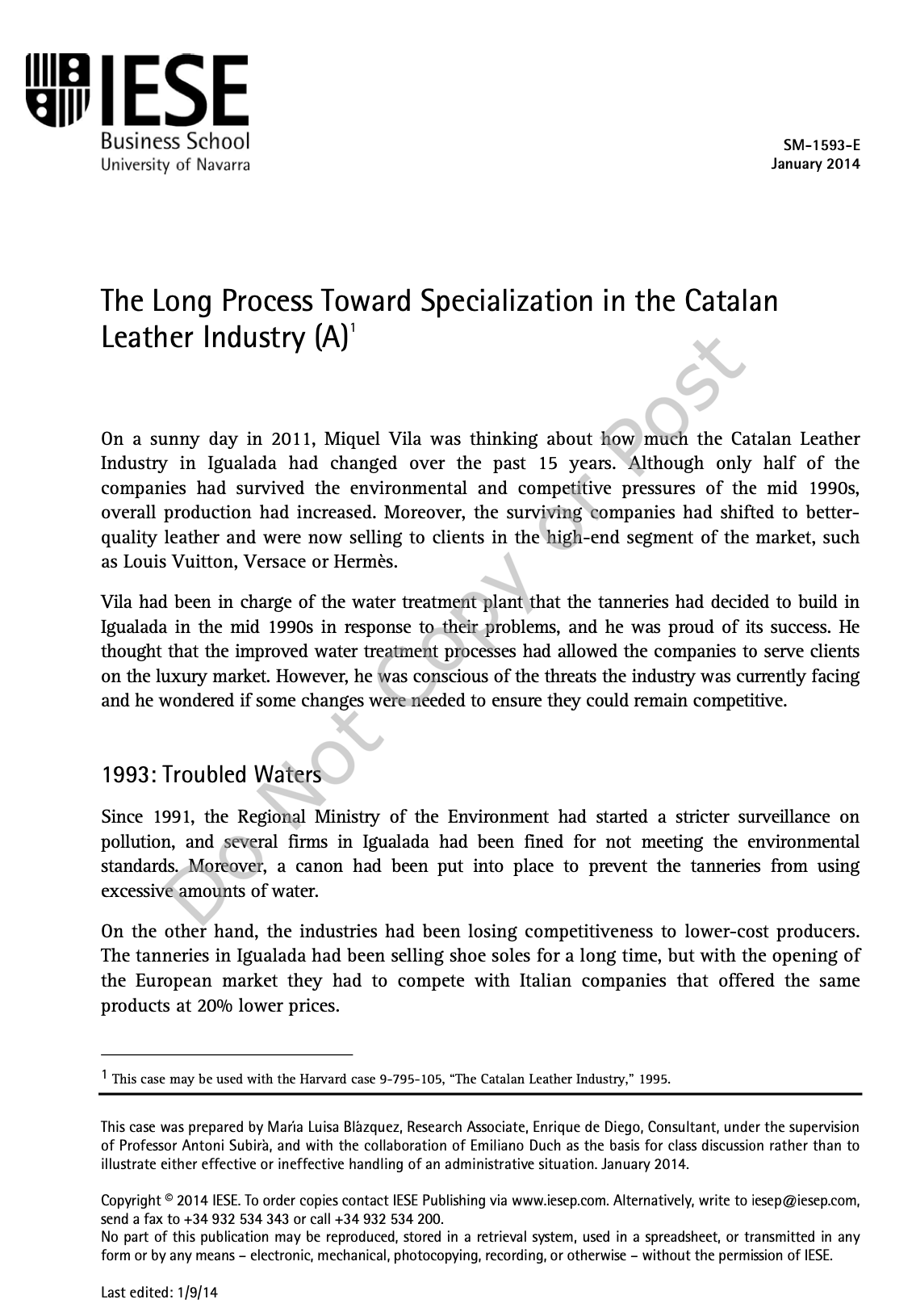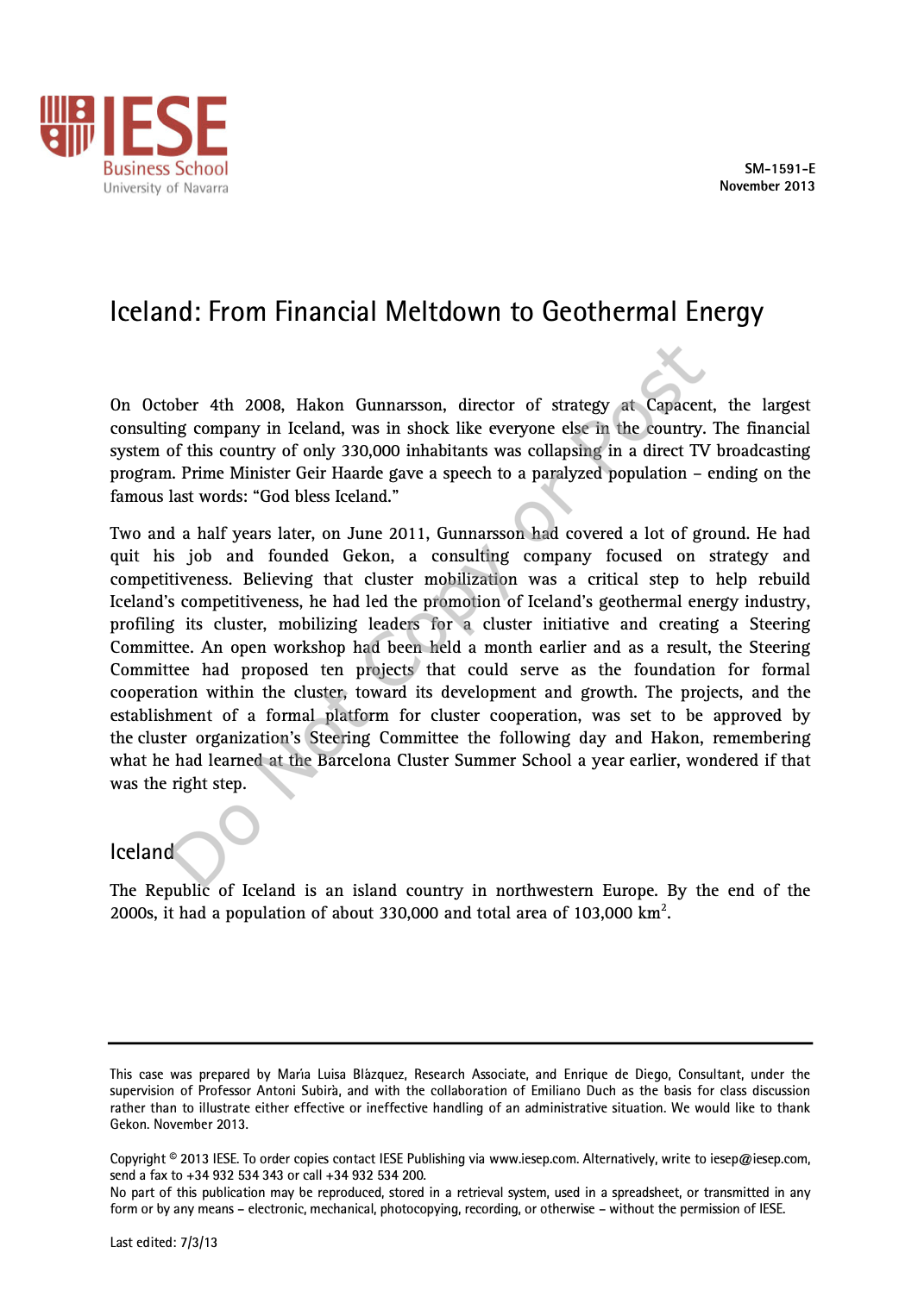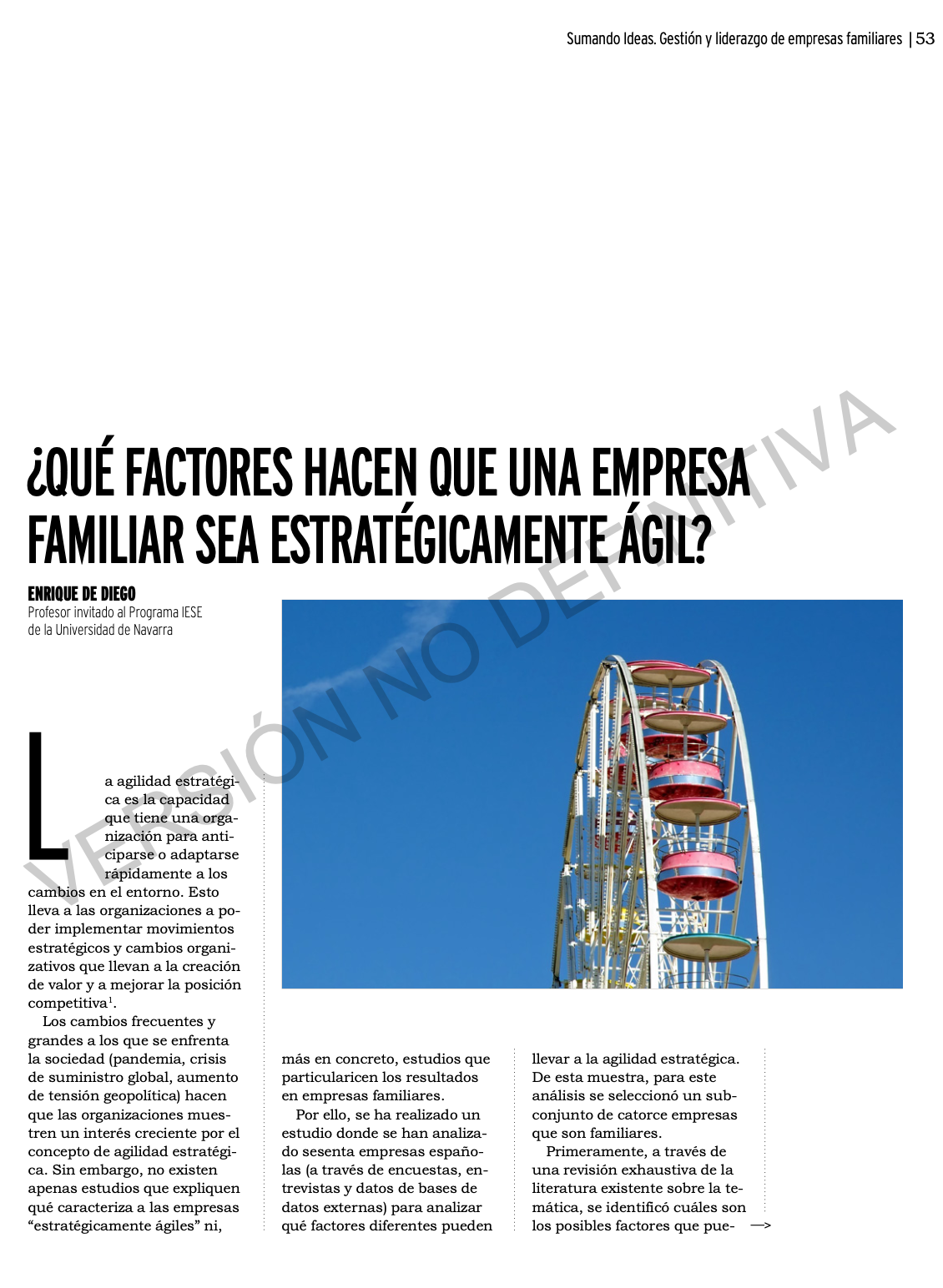Case A:
The leather industry had had more than five centuries of history in Catalonia.Spain was incurring the risk of being sanctioned by the European Union if it didn’t adhere to strict environmental standards. However, industry representatives claimed to be at a disadvantage with respect to developing countries. The case explains the technical solution implemented in the 1990s. The answer Subirá found to the environmental dilemma was to develop a joint waste water treatment plant. This plant cost 17 m€ and was financed with a 25% investment from the tanneries, and the rest from private bank loans. This plant was managed by Miguel Vila, who hired a young professional to help him with the duties. Furthermore, Catalan industry General Manager Jordi Conejos gave support to this plant. In addition, a technological center was also created. This case encourages students to analyze actions undertaken in the past and to assess whether those actions were sufficient.
Case B:
From 2005 on, tanners from Igualada made a successful move from the traditional production of shoe soles to a new market of high-quality leather products sold to clients on the luxury market. However, the number of Chinese tanners had been growing at an increased rate during the previous years, and the Catalan companies knew that their shift to high-quality products would not provide long-term protection against their Chinese rivals.


